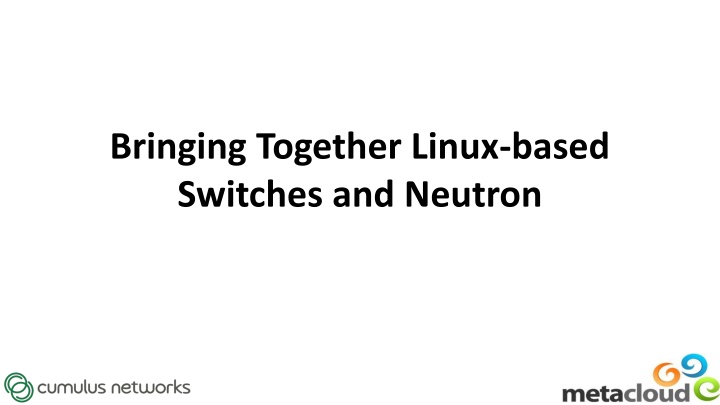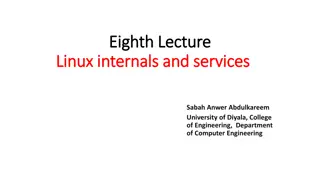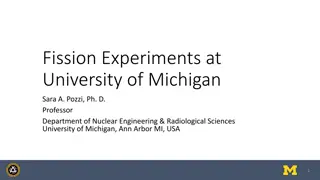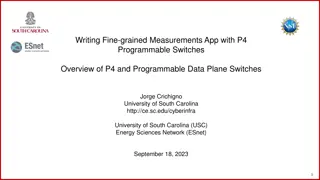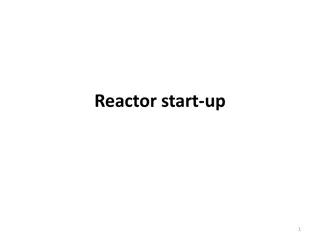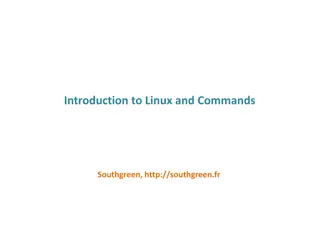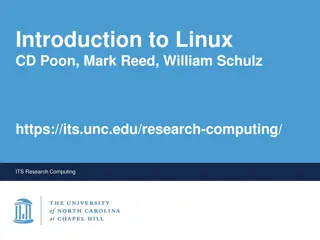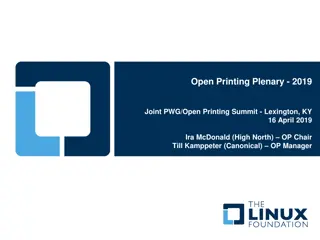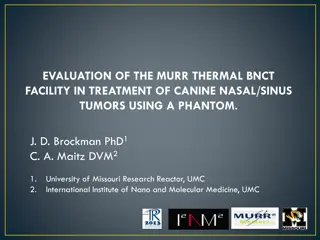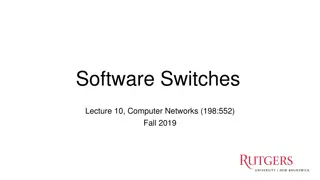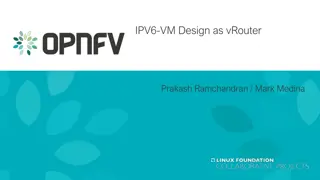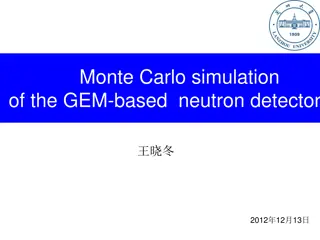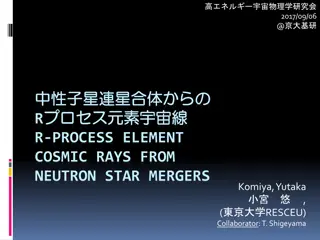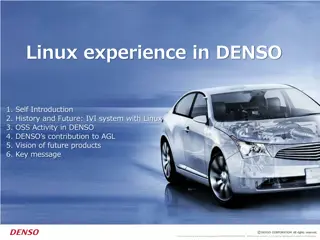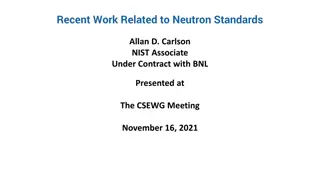Bringing Together Linux-based Switches and Neutron
Linux-based switches offer a powerful solution for configuring networking in VMs, enabling easy development, testing, and complex topologies. Learn why Linux-based switches are preferred and how a prototype agent running on these switches enhances functionality.
Download Presentation

Please find below an Image/Link to download the presentation.
The content on the website is provided AS IS for your information and personal use only. It may not be sold, licensed, or shared on other websites without obtaining consent from the author.If you encounter any issues during the download, it is possible that the publisher has removed the file from their server.
You are allowed to download the files provided on this website for personal or commercial use, subject to the condition that they are used lawfully. All files are the property of their respective owners.
The content on the website is provided AS IS for your information and personal use only. It may not be sold, licensed, or shared on other websites without obtaining consent from the author.
E N D
Presentation Transcript
Bringing Together Linux-based Switches and Neutron
Who We Are Nolan Leake Cofounder, CTO Cumulus Networks Chet Burgess Senior Director, Engineering Metacloud OpenStack Summit Fall 2013
Why Linux-Based Switches? Everyone knows how to configure Linux Networking VMs Development, Testing, Demos Create complex topologies on laptops Cumulus Linux Linux Distribution for HW switches (Debian based) Hardware accelerate Linux kernel forwarding using ASICs Just like a Linux server with 64 10G NICs, but ~50x faster OpenStack Summit Fall 2013
eth1 Unmanaged Physical Switches Network Controller DHCP agent dnsmasq L3 agent L3 Agent br101 br102 Neutron Server Neutron ML2 Driver eth0.101 eth0.102 eth0 Linux Bridge ML2 mechanism driver Trunked Linux Bridge Agent swp2 Switch vm02 vm03 vm01 br0 tap02 tap03 tap01 swp1 br102 br101 Trunked eth0.102 eth0.101 Hypervisor eth0 vlan101 vlan102 Trunked
Configured by Vendor Proprietary ML2 Mechanism Driver eth1 Network Controller DHCP agent dnsmasq L3 agent L3 Agent Vendor Proprietary Managed Physical Switches br101 br102 Neutron Server Neutron ML2 Driver Vendor Proprietary ML2 mechanism driver eth0.101 eth0.102 eth0 Trunked Linux Bridge Agent swp2 Switch vm01 vm02 vm03 Vendor Specific Magic tap01 tap02 tap03 Vendor Agent swp1 br101 br102 Trunked eth0.101 eth0.102 Hypervisor eth0 vlan101 vlan102 Trunked
Configured by Linux Switch ML2 Mechanism Driver eth1 Network Controller DHCP agent dnsmasq L3 agent L3 Agent Linux Managed Physical Switches br101 br102 Neutron Server Neutron ML2 Driver eth0.101 eth0.102 eth0 Linux Bridge ML2 mechanism driver Trunked Linux Bridge Agent swp2 Switch vm01 vm02 vm03 swp2.101 swp2.102 br101 br102 swp1.102 tap01 tap02 tap03 swp1.101 Linux Switch Agent swp1 br101 br102 Trunked eth0.101 eth0.102 Hypervisor eth0 vlan101 vlan102 Trunked
Implementation Prototype agent that runs on Linux based switches Based on existing Linux Bridge Agent Leverage existing ML2 notification frame work Agent gets notified of certain events port create, port update, port delete Examines event and takes action when appropriate OpenStack Summit Fall 2013
Whats left to do? Add support for trunking between switches Add support for LLDP based topology mapping State Synchronization agent/switch restarts Detect topology change Refactor to share code with Linux Bridge Agent Upstream in Icehouse OpenStack Summit Fall 2013
Demo OpenStack Summit Fall 2013
Is L2 the right tool for the job? Traditional DC Network Design L2/L3 demarcation point at aggregation layer Challenges: Aggregation points must be highly available and redundant Aggregate scalability MAC/ARP, VLANs, choke point for East-West connectivity Too many protocols Proprietary protocols/extensions OpenStack Summit Fall 2013
Traditional Enterprise Network Design Core ECMP L3 Aggregation VRRP VRRP L2 STP STP Access OpenStack Summit Fall 2013
L3: A better design IP Fabrics Are Ubiquitous Proven at megascale ECMP Better failure handling Predictable latency No east/west bottleneck Simple Feature Set Scalable L2/L3 Boundary SPINE LEAF OpenStack Summit Fall 2013
How would this work? VM Connectivity ToR switches announce /32 for each VM L3 Agents on hypervisor Hypervisors have /32 route pointing to TAP device No bridges Floating IP Hypervisor announces /32 for Floating IP 1:1 NAT to private IP on hypervisor OpenStack Summit Fall 2013
How would this work? VM Mobility Withdraw /32 from source, announce on destination Scalability Average VM will have 1-2 IP addresses (fixed, floating) Current gen switching hardware handles ~20K routes Next gen switches hardware handles ~100K routes 1 OSPF zone per ~500 hypervisors* Security/Isolation VMs are L2 isolated (no bridges) L3 isolation via existing security groups OpenStack Summit Fall 2013
Q&A OpenStack Summit Fall 2013
